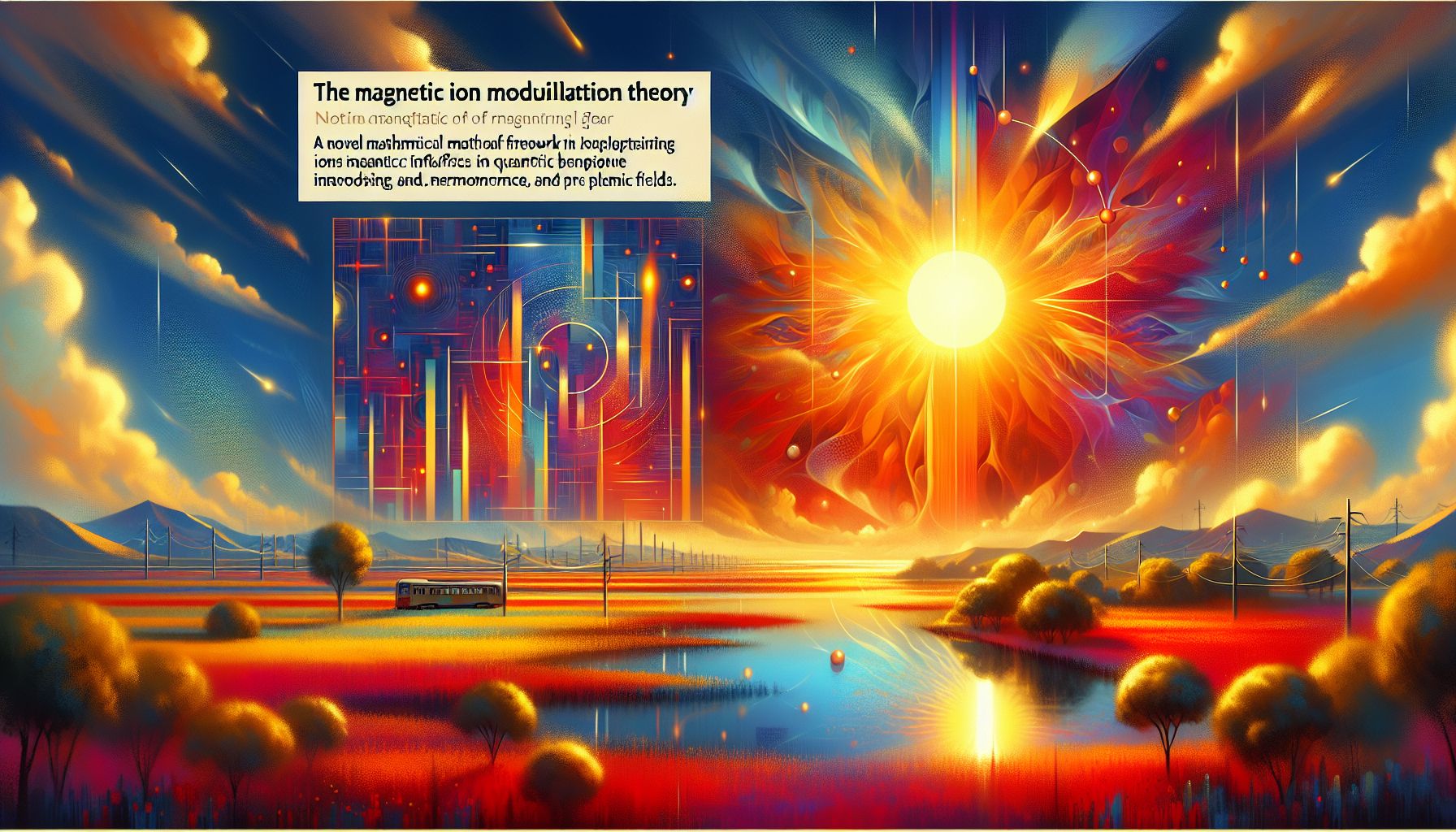Novel Magnetic Theory Promises Breakthroughs in Quantum Computing and Neuroscience

Eindhoven, Wednesday, 25 September 2024.
The Magnetic Ion Modulation Theory, a new mathematical framework for controlling ion behavior with magnetic fields, has potential applications in quantum computing, neuroscience, and plasma physics. This groundbreaking concept, currently under review at Nature Physics, has garnered significant attention in its first 48 hours online.
Introduction to MIM Theory
Developed by Tristan Siokos, a researcher unaffiliated with any specific institution, the Magnetic Ion Modulation (MIM) Theory offers a novel approach to modulating ion behavior. This framework is designed to control and predict the dynamics of ions in both biological and non-biological systems through the application of external magnetic fields. The innovative theory holds promise for a range of fields, including quantum computing, neuroscience, and plasma physics[1].
How MIM Theory Works
At the heart of MIM Theory is the Ion Modulation Constant, denoted as Tn, which provides a mathematical basis for predicting ion dynamics. By manipulating magnetic fields, researchers can theoretically control the movement and behavior of ions. This control could lead to advancements in various applications, such as non-invasive neuromodulation techniques for treating chronic pain and neurological disorders. The use of magnetic fields to influence ions could also enhance the stability of qubits, which are essential for the development of quantum computers[1][2].
Potential Benefits and Applications
The potential benefits of MIM Theory are vast. In the field of neuroscience, the ability to control ion behavior could lead to new treatments for chronic pain and other neurological conditions. For quantum computing, MIM Theory offers a method to improve qubit stability, which is crucial for the development of reliable quantum computers. Moreover, the theory’s applications in plasma physics could improve the control of plasma states, which is essential for advancements in fusion energy research[1][3].
Community and Academic Reception
Since its publication on Zenodo, the MIM Theory preprint has received considerable attention, with 207 views and 63 downloads within the first 48 hours[2]. The theory has sparked discussions in academic and online communities, particularly in forums dedicated to quantum computing. Researchers and enthusiasts have expressed interest in the potential impacts of MIM Theory on qubit stability and other areas of quantum mechanics. Siokos has invited constructive feedback and collaboration from experts in experimental physics, neuroscience, and quantum computing to further validate and refine the theory[2][4].
Next Steps and Future Research
While MIM Theory shows significant promise, it is still in its formative stages and requires further experimental validation. Siokos is actively seeking collaboration with experts across various disciplines to test the theory’s claims and explore its full potential. The future of MIM Theory remains uncertain, but its innovative approach to controlling ion behavior could pave the way for groundbreaking advancements in multiple fields. Researchers are encouraged to review the preprint and contribute their insights to help advance this exciting area of study[4][5].

